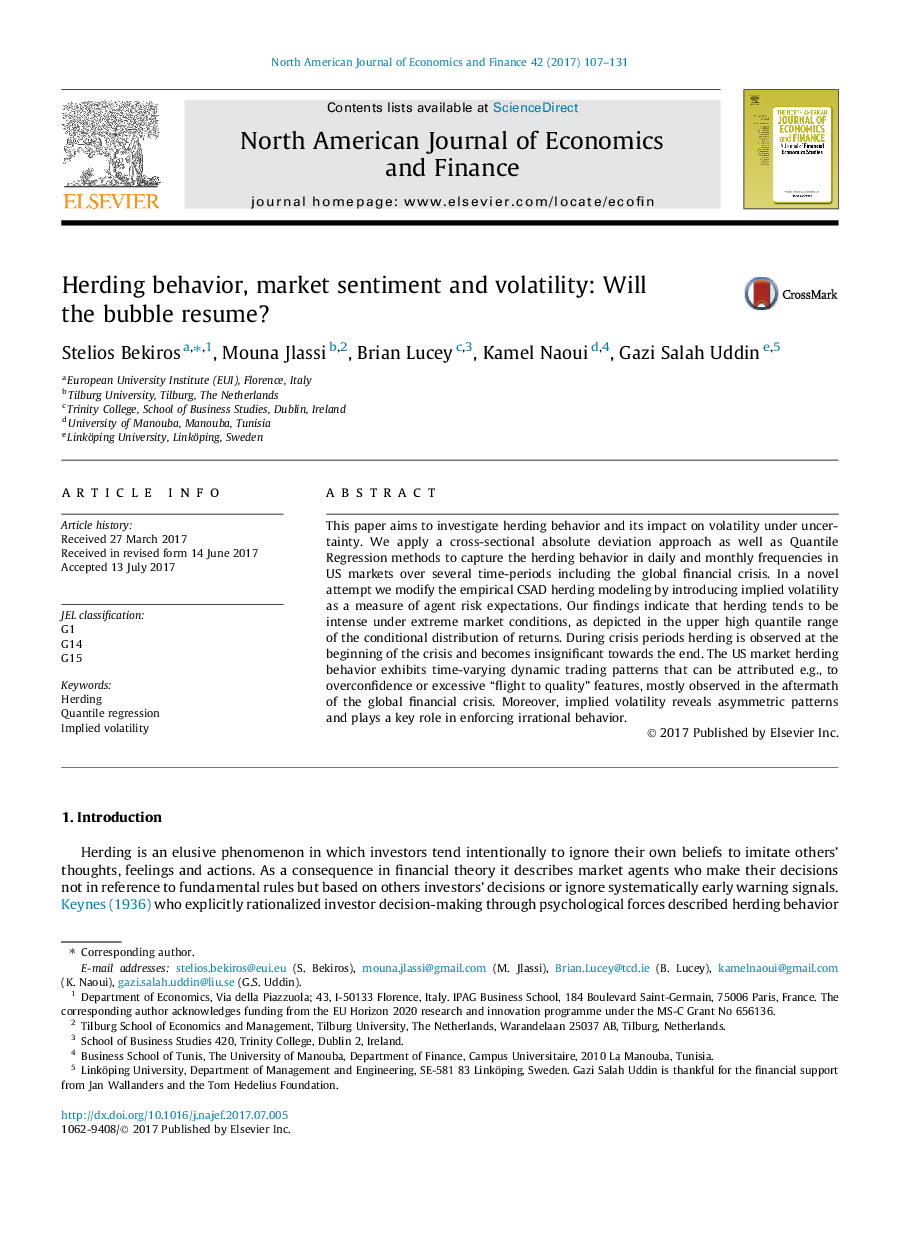| Article ID | Journal | Published Year | Pages | File Type |
|---|---|---|---|---|
| 5102174 | The North American Journal of Economics and Finance | 2017 | 25 Pages |
Abstract
This paper aims to investigate herding behavior and its impact on volatility under uncertainty. We apply a cross-sectional absolute deviation approach as well as Quantile Regression methods to capture the herding behavior in daily and monthly frequencies in US markets over several time-periods including the global financial crisis. In a novel attempt we modify the empirical CSAD herding modeling by introducing implied volatility as a measure of agent risk expectations. Our findings indicate that herding tends to be intense under extreme market conditions, as depicted in the upper high quantile range of the conditional distribution of returns. During crisis periods herding is observed at the beginning of the crisis and becomes insignificant towards the end. The US market herding behavior exhibits time-varying dynamic trading patterns that can be attributed e.g., to overconfidence or excessive “flight to quality” features, mostly observed in the aftermath of the global financial crisis. Moreover, implied volatility reveals asymmetric patterns and plays a key role in enforcing irrational behavior.
Related Topics
Social Sciences and Humanities
Economics, Econometrics and Finance
Economics and Econometrics
Authors
Stelios Bekiros, Mouna Jlassi, Brian Lucey, Kamel Naoui, Gazi Salah Uddin,
